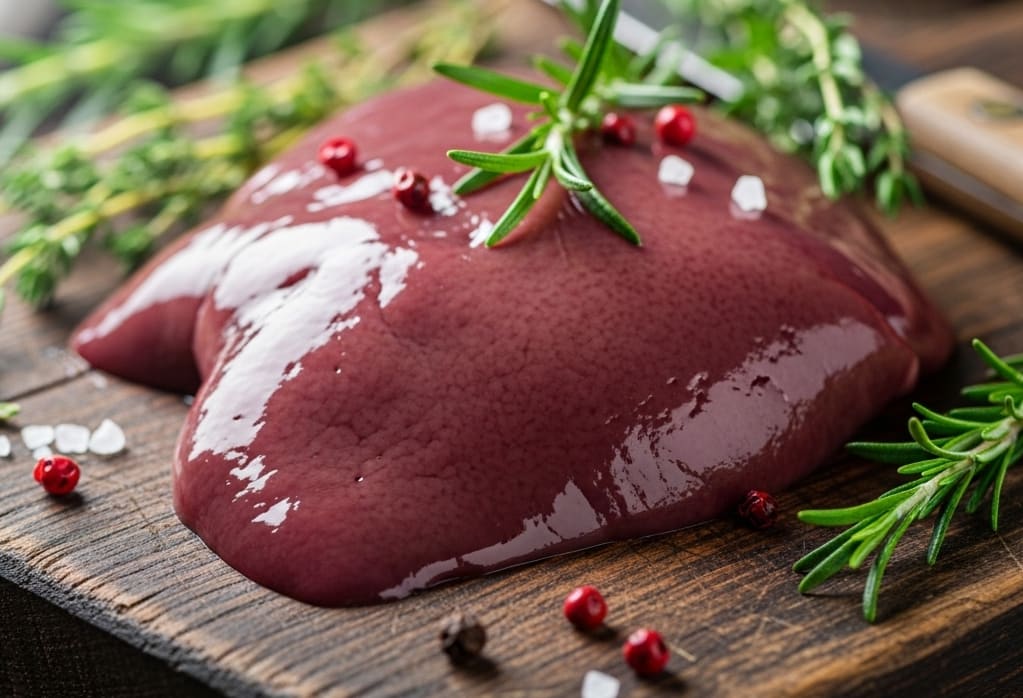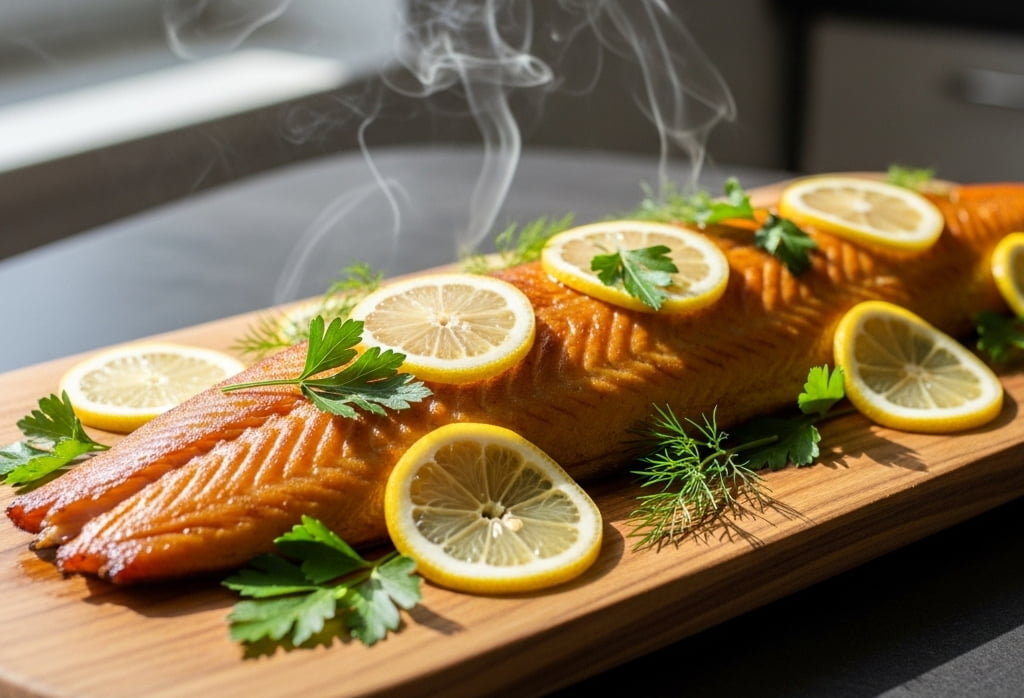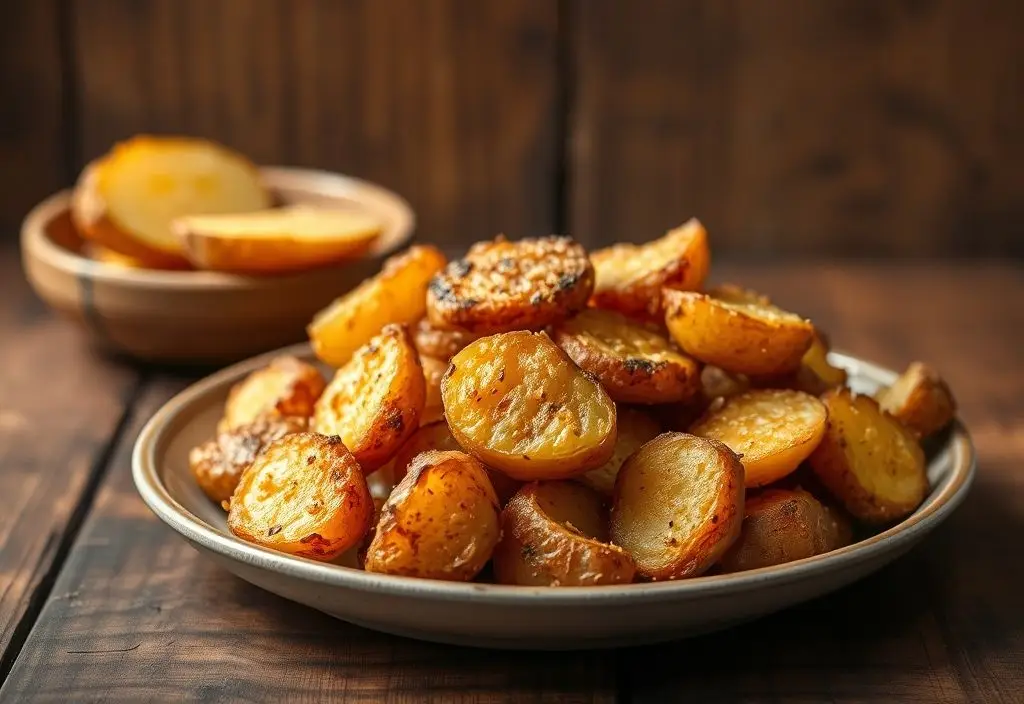Lamb liver is a nutrient-packed food that offers a powerful combination of vitamins, minerals, and protein in every 100g serving. Rich in vitamin B12 and iron, it supports energy production and helps prevent anemia, while also contributing to overall well-being. Many people overlook this ingredient because of its strong flavor, but when prepared correctly, it becomes versatile enough to fit into a variety of dishes. Whether you are exploring healthy eating, boosting your iron intake, or experimenting with traditional recipes, it provides both health benefits and culinary possibilities. By understanding its nutritional profile and how to cook it properly, you can make informed choices that add real value to your diet.
What is Lamb Liver?
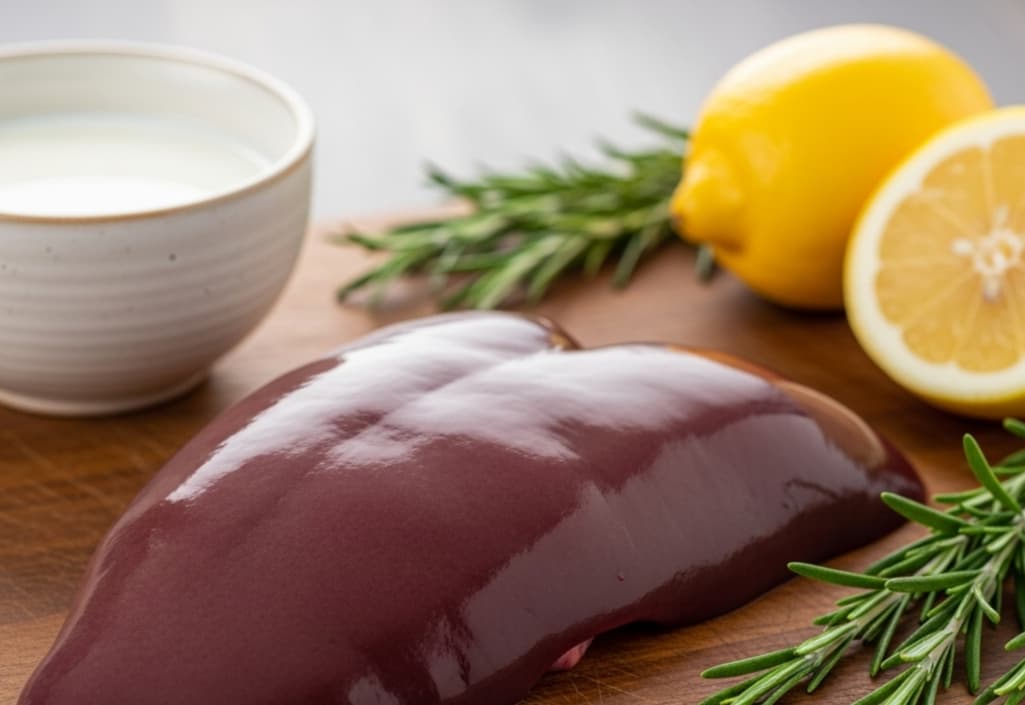
Lamb liver comes from young sheep and is considered one of the most nutrient-dense organ meats. It has a softer texture and milder flavor compared to beef liver, making it more approachable for those trying organ meats for the first time. A typical serving size is about 100g (or one slice, roughly 85g), which provides high-quality protein, essential vitamins like B12 and A, and minerals such as iron, zinc, and copper. Vitamin B12 supports nerve function, while iron helps prevent anemia, contributing to healthy blood formation, improved energy levels, and overall bodily functions.
Different from beef liver, this organ meat has a slightly sweeter taste and a smaller size, which allows for quicker cooking and a tender finish.
Generally, it has a milder flavor, smaller size, and slightly higher vitamin A content than beef liver, while beef liver is richer in iron. Organic options are increasingly sought after for higher nutrient content and cleaner sourcing, providing extra assurance about quality and farming practices.
Nutritional Value of Lamb Liver
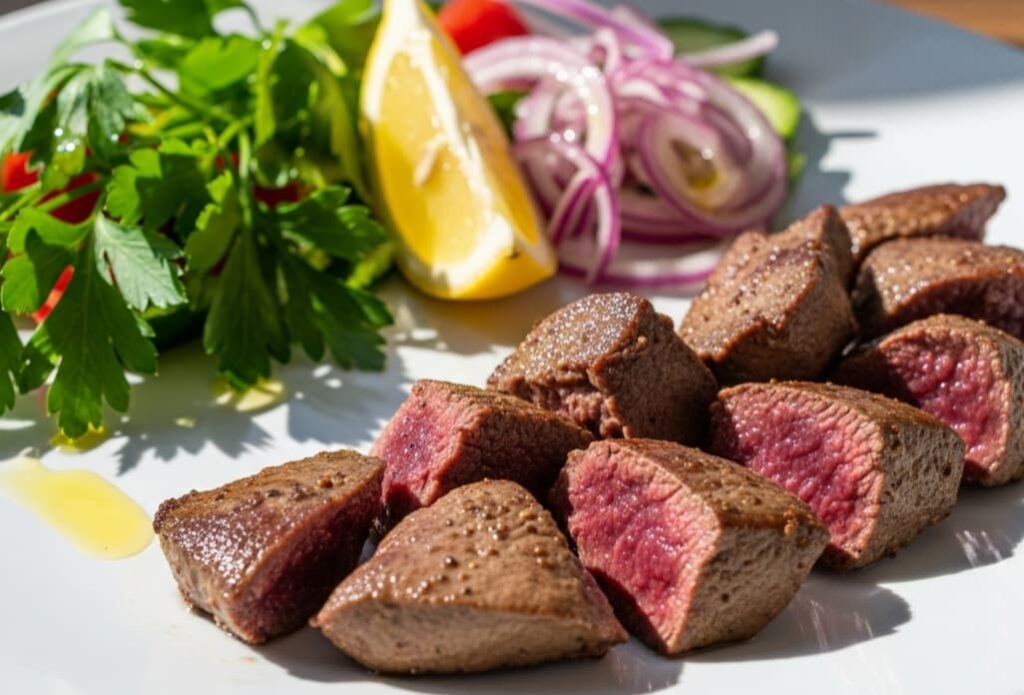
Lamb liver provides a concentrated source of essential nutrients that support various aspects of health. In a 100-gram serving, it contains roughly 20–25 grams of protein, which is approximately equal to the protein in one chicken breast, helping maintain muscle strength and repair tissues. The fat content remains moderate at around 5–6 grams. In comparison, cholesterol levels measure approximately 345 milligrams per 100 grams, which is about 115% of the recommended daily intake, an essential consideration for those monitoring heart health.
Vitamins are a standout feature of this organ meat. It is exceptionally rich in vitamin B12, with around 85 micrograms per 100 grams, supporting red blood cell formation and nervous system function. Vitamin A content is also high, contributing to eye health and immune system support. Folate and riboflavin are present, aiding in energy production and metabolic functions.
Minerals in this organ meat further enhance its nutritional value. Iron content is significant at about 6 milligrams per 100 grams, making it an excellent choice for preventing anemia. Zinc and copper are also abundant, supporting immune function and antioxidant defense.
| Nutrient | Amount per 100g | Key Benefit |
|---|---|---|
| Protein | 20–25 g | Muscle maintenance, tissue repair |
| Fat | 5–6 g | Moderate healthy fats |
| Cholesterol | 345 mg | ~115% daily value; monitor intake |
| Vitamin B12 | 85 µg | Red blood cell formation, nerve function |
| Vitamin A | High | Eye health, immune support |
| Folate | Moderate | Energy production, metabolism |
| Iron | 6 mg | Prevents anemia |
| Zinc | Moderate | Immune function |
| Copper | Moderate | Antioxidant defense |
It has a slightly higher vitamin A content than beef liver, while chicken liver is lower in iron but higher in vitamin A. These differences make it a versatile and nutrient-dense option for those seeking variety in their diet.
Health Benefits of Lamb Liver
Lamb liver offers a range of health benefits due to its concentrated nutrient profile. In a 100g serving, it provides about 85 µg of vitamin B12 (over 200% of the daily requirement), 6 mg of iron, 65 mg of choline, and 15 µg of selenium. These nutrients support healthy blood formation, prevent anemia, and maintain consistent energy levels.
Including this organ meat 1–2 times per week is generally safe and helps sustain brain and nerve function, thanks to B12 and choline, while also providing antioxidant support from selenium and copper. Lesser-known benefits include improved skin, hair, and eye health. Since I started adding it to my weekly meals, I’ve noticed more consistent energy throughout the day, and cooking it has become an enjoyable part of my routine.
How to Cook Lamb Liver and Simple Recipes
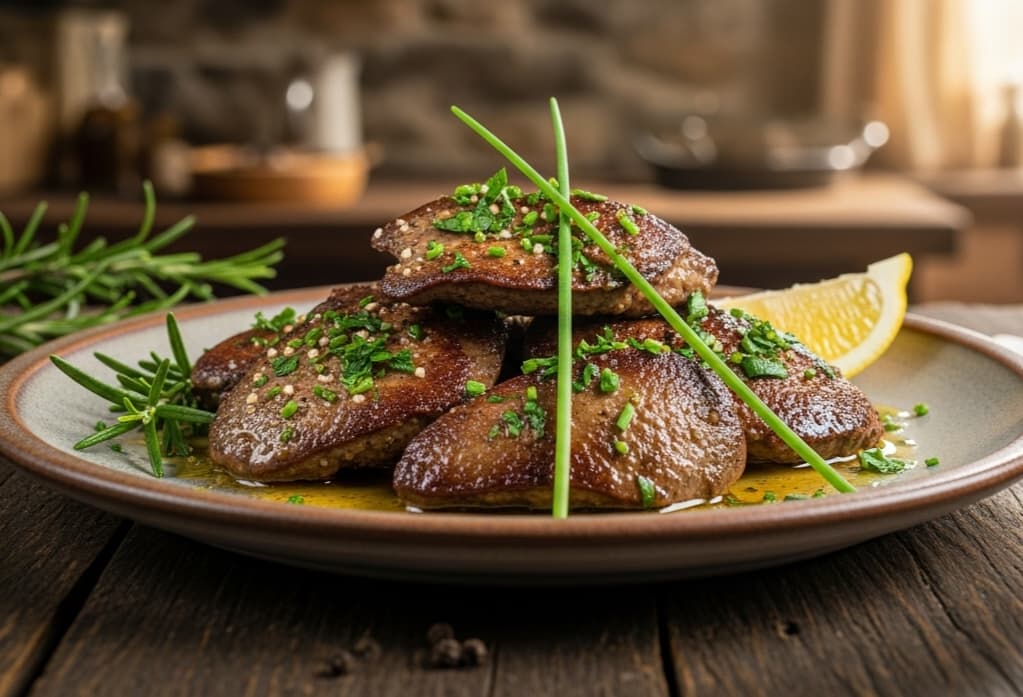
Lamb liver cooks quickly, so short cooking times are best. Slice it into thin pieces for even cooking. Heat a pan over medium heat with a bit of oil, then cook the slices for 2–3 minutes on each side until just firm (internal temperature around 70°C / 160°F). Avoid overcooking, or it will become tough. Alternative methods include grilling, sautéing, or steaming briefly for a different flavor and texture.
To improve taste, soak the liver in milk for 20 minutes before cooking. This step helps eliminate any intense or metallic flavors; note that it involves dairy, which may be a concern for individuals with dairy allergies. You can also cook it with onions, garlic, and mild spices for extra flavor.
For a creamy option, try liver pâté. Blend cooked liver with a small amount of butter and seasoning until smooth. This pâté recipe yields about four small servings and can be served as a spread or appetizer. Personally, I started making liver pâté for family gatherings, and it quickly became a favorite – even those who usually avoid organ meats ask for seconds!
Delicious Recipes to Try:
Classic Sautéed Liver
- Ingredients: 500g liver, 2 tbsp ghee or butter, one onion sliced, two garlic cloves minced, salt, pepper, red chili flakes, fresh coriander
- Method: Sauté onion and garlic in ghee until golden. Add liver slices and fry 2–3 minutes per side. Season and garnish with coriander.
Spicy Liver Masala
- Ingredients: 500g liver, 2 tbsp oil, one onion chopped, two tomatoes pureed, 1 tsp ginger-garlic paste, 1 tsp turmeric, 1 tsp chili powder, 1 tsp garam masala, salt
- Method: Fry onion and ginger-garlic paste, add tomatoes and spices for 5 mins. Add liver cubes and cook 5–7 mins. Serve with roti or rice.
Liver with Lemon & Herbs
- Ingredients: 500g liver slices, 2 tbsp olive oil, juice of 1 lemon, 1 tsp dried oregano or thyme, salt & pepper
- Method: Marinate liver in lemon, salt, pepper, and herbs for 15–20 mins. Fry 2–3 mins per side in olive oil. Serve with salad or steamed vegetables.
Five-Minute Liver Fry
- Ingredients: 500g liver, thinly sliced, 2 tbsp oil/ghee, one small onion, chopped, 1–2 green chilies, sliced, 1 tsp ginger-garlic paste, ½ tsp turmeric, ½ tsp red chili powder, salt, and coriander
- Method: Heat oil, fry onions & chilies 1–2 mins. Add spices & liver slices, and fry for 2–3 minutes per side. Garnish with coriander and serve hot with roti or paratha.
What Lamb Liver Tastes
Lamb liver has a distinct flavor that is slightly sweet with a mild metallic undertone. Its texture is tender when cooked properly, but overcooking can make it firm and chewy. To balance the intense flavor, beginners can try a quick marination with mild spices or pair it with onions, garlic, and herbs.
A typical serving is about one slice (roughly 85g) per meal. This liver has a milder taste compared to beef liver, which is stronger and more metallic, while chicken liver is softer and less intense. I like pairing it with lightly sautéed onions and a squeeze of lemon to enhance its natural richness.
Lamb Liver Around the World
Lamb liver is enjoyed in various cuisines worldwide, each bringing unique flavors and preparation styles. In Arabic cuisine, it is often sautéed with spices such as cumin, coriander, and garlic, creating aromatic and nutrient-rich dishes that are a staple in traditional meals. A typical serving is about 100g.
In Tamil cuisine, it is typically cooked with curry leaves, mustard seeds, and mild spices, resulting in flavorful and tender meals. These preparations are traditionally popular because they make the liver more palatable while retaining its nutrients.
French recipes often transform this liver into a creamy pâté, served as an appetizer or spread, highlighting its delicate texture and rich nutritional value. Halal sourcing is essential for many consumers, ensuring the liver comes from properly slaughtered animals.
I still remember trying it in Arabic cuisine during a visit to a local family’s home – the combination of spices and the tender texture made it surprisingly enjoyable.
Conclusion
Lamb liver offers a unique combination of nutrients, flavor, and culinary versatility. Its rich content of vitamin B12, iron, and high-quality protein supports energy, blood health, and overall wellness. A typical serving of 100g, 1–2 times per week, provides optimal nutrients. By understanding how to cook it properly (see Section 4) and exploring global recipes, you can enjoy it in a way that is both tasty and beneficial. Whether pan-fried, sautéed, or prepared as a creamy pâté, incorporating it into your meals adds real nutritional value and variety to your diet.
With mindful preparation and moderate consumption, this organ meat becomes a powerful, practical addition to everyday meals. Try experimenting with different recipes and flavors to make it a delicious part of your weekly menu.
FAQs
Is lamb liver high in cholesterol?
Yes, lamb liver contains roughly 345 milligrams of cholesterol per 100 grams, which is about 115% of the recommended daily intake. While it is high, moderate consumption can fit into a balanced diet. Those with high cholesterol or heart concerns should limit portions accordingly.
Which is better, lamb liver or beef liver?
Lamb liver has a milder taste and more tender texture, while beef liver has a stronger flavor and slightly higher cholesterol. Nutritionally, both provide protein, iron, and vitamins, but lamb liver may be easier to cook and enjoy for beginners.
How much protein is in 100 grams of lamb liver?
A 100-gram serving provides about 20–25 grams of protein, supporting muscle repair, energy, and overall health.
Is eating lamb liver healthy?
Yes, when consumed in moderation, this organ meat provides concentrated nutrients, including B12, iron, and vitamin A. These support blood health, energy, and immune function, making it a valuable addition to a balanced diet.
How should lamb liver be cooked?
Cooking quickly at medium heat preserves tenderness and nutrients. Slice thinly, pan-fry for 2–3 minutes per side, or prepare as a pâté. Soaking in milk beforehand helps reduce any intense flavors. See Section 4 for detailed cooking methods.
